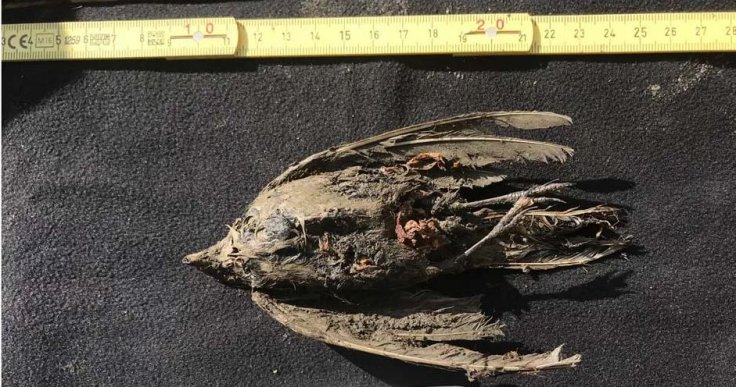When a fossil hunter found a dead bird and approached to Jacquelyn Gill, who was conducting fieldwork at the Siberian permafrost caves during the summer of 2018, she thought that it had just recently flown into the cave and died. But later a translator revealed that the fossil hunter was trying to tell Gill that the bird was an ancient creature, one of the first frozen bird carcasses ever found in a late Pleistocene permafrost deposit.
Recently, the researchers have published their findings and described the bird which is an approximately 46,000-year-old female horned lark. It should be noted that this bird species is still very common across the Northern Hemisphere in modern days.
The ancient bird

It should be mentioned that one of the fossil hunters who visited the area found the bird 150 meters into a tunnel, around seven meters underground. Later when the scientists brought the ancient bird to the lab in the Centre for Palaeogenetics in Stockholm, carbon-dated specimen determined its age based on the ratio of radioactive carbon molecules in the bird's tissue. During the study, the researchers were also able to sequence its genome.
Nicolas Dussex, the study's first author from the Center for Palaeogenetics, told Gizmodo that they researched on very fragile evidence. He mentioned that anything could have crushed the hollow-boned carcass over the millennia, but still they managed to get the well-preserved samples. In addition, the scientist said, "We could even look at the contents of its stomach if we had the chance. It's like entering a walk-in freezer and finding a thing that's been stored for 45,000 years."

Bird revealed ancient mystery
It should be noted that as per the researchers the ancient bird has revealed the environmental situation of Siberia at that time. The paper published in the journal Nature Communications Biology revealed that the bird's presence with other finds in the caves, like bison, horses, and mammoths, suggested that this region was covered by a mixture of tundra and steppe habitats thousands of years ago.
But there has been an incredible ecosystem change since the last glacier period, said Gill. When the Ice Age, that began about 2.6 million years ago, come to its end the large mammals found in the cave died out and the area also lost its large grazers, which was important for the balance of the ecosystem. Scientists believe that these kinds of changes would have pushed more wild species to go extinct.
But the bird species, horned lark, had survived the region's transformation and genetic analysis revealed that it is the ancestor of two surviving horned lark subspecies, which include those species live in Scandinavia and Northern Russia and another one which can be found in regions like Mongolia, Kazakhstan and China.









